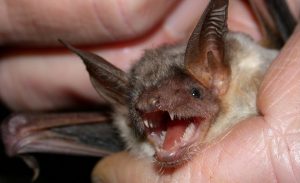Attics, crawl spaces, decks, porches, and roofs are the most common areas of a property where bat infestations are found. If you notice or find evidence of a bat infestation in or around your property, it is important to understand that bat removal is not a do-it-yourself job. Continue reading to learn why you should never attempt to remove bats on your own, and the safest alternative to DIY bat removal and control.
Bats are Dangerous
There are several reasons why someone without proper training and experience should never remove bats in their own. Although bats are incredible and fascinating assets to nature and the surrounding environment, they are dangerous to humans and pets. They are known to be contagious or carriers of various diseases, bacteria, and viruses; such as rabies, Leptospirosis, salmonella, lice, bat mites, and more. Large and stagnant accumulations of bat guano (droppings) can also cause serious health problems. Histoplasmosis is a lung infection caused by inhaling the harmful spores of the Histoplasmosis fungus that lives within the guano. These spores can travel through air vents, ducts, and more and be inhaled by anyone nearby.
On top of diseases, contact with a bat can cause physical injury. Bats are not known to attack humans or pets; however, if provoked or threatened (especially mommy bats), they will take necessary action to protect themselves and their young. This means they can scratch the skin with their sharp claws, or bite with their teeth. Both can transfer viruses, bacteria, diseases to humans and pets; some of which can be deadly if left untreated.
Use Professional Bat Removal Services to Get Rid of Bats
Professional bat removal companies retain staffs of licensed and qualified technicians that have extensive experience dealing with bats. They also retain the proper equipment and tools to safely and humanely remove bats and prevent their return. Well-equipped companies are even capable of structural damage repair and attic restorations. These are the people to trust for reliable and effective bat removal and control. Not only can they safely remove bats, they can repair and cleanup the damages and mess left behind.
Indianapolis Bat Removal and Control Services
Call 317-535-4605 for reputable and affordable bat removal and control services in Indianapolis, IN and its surrounding counties. We are DNR licensed and insured wildlife rescue contractors. Request a free estimate or bat control advice, anytime!

